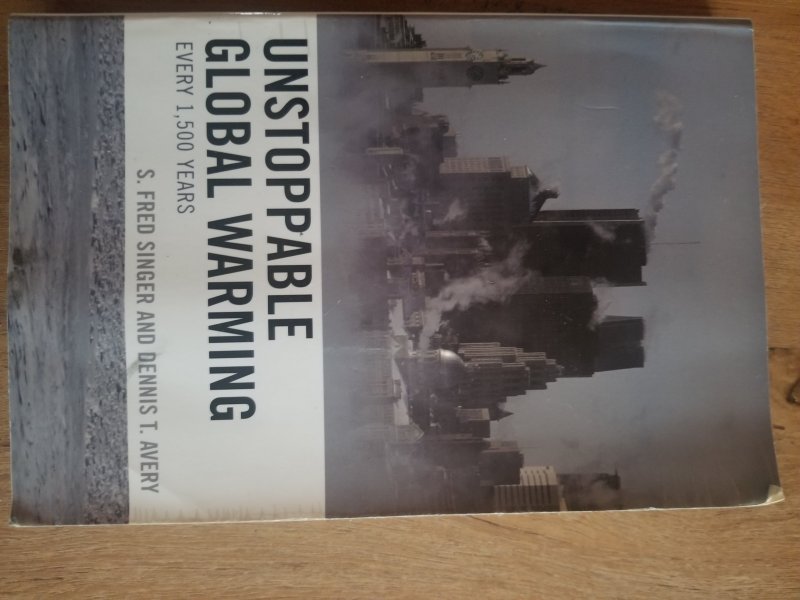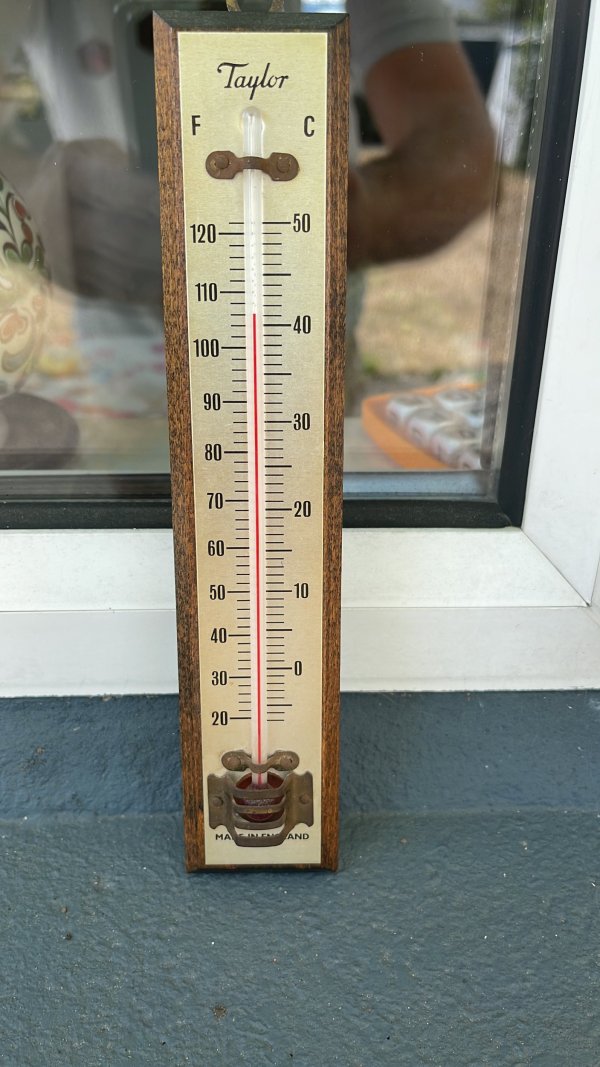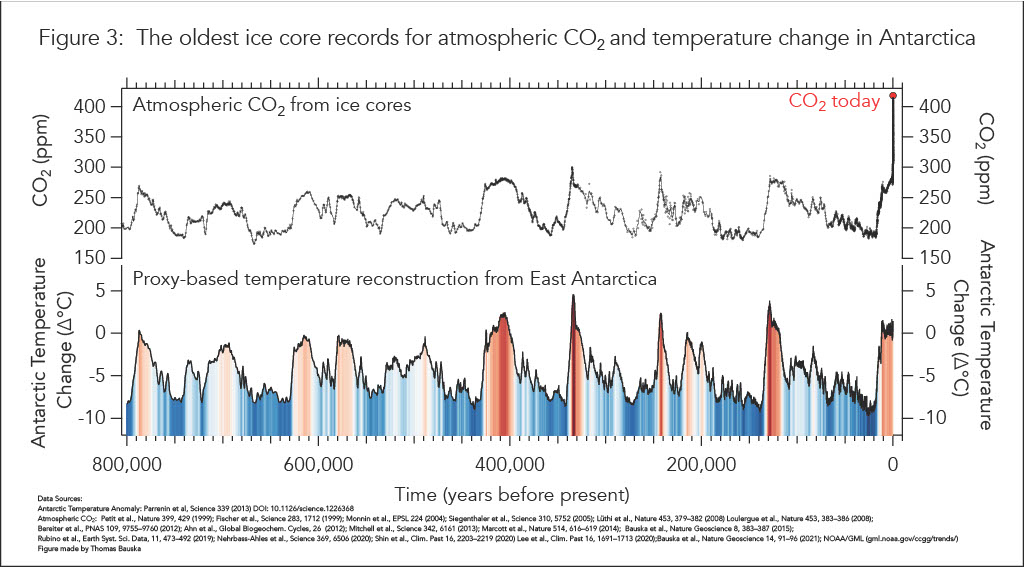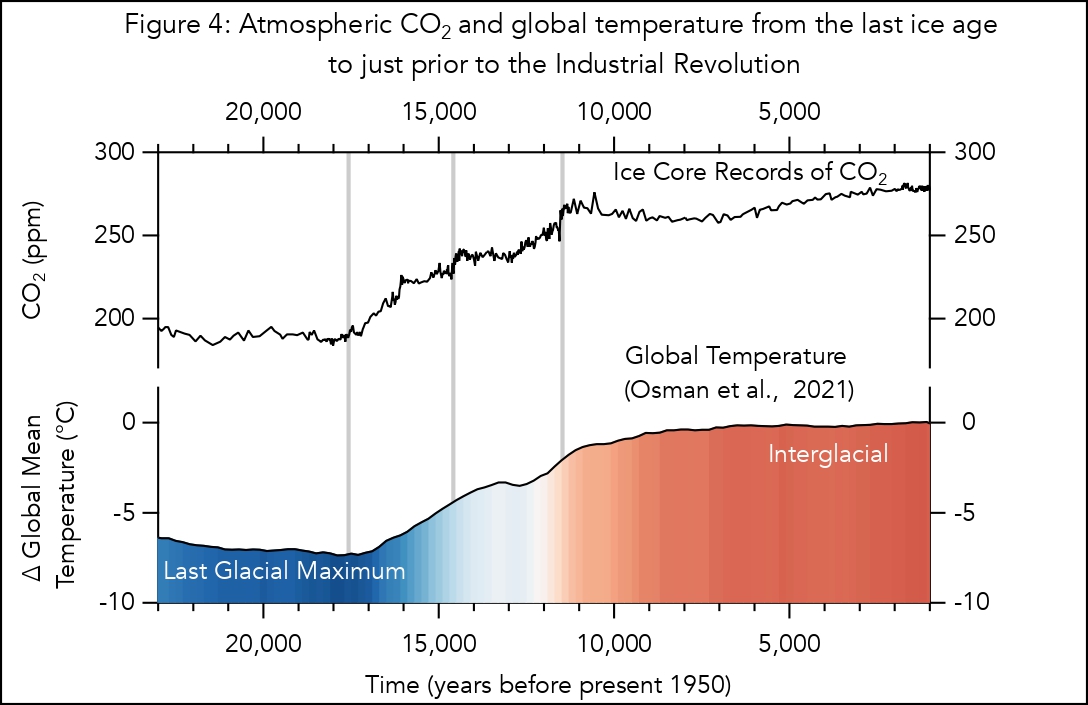Antartica ice core sampling currently gives us an 800,000 year record of greenhouse concentrations in the atmosphere and a corresponding indicative record of global temperatures over most of the last millennium,
From the UK’s British Antarctic Survey…
BAS >
Data >
Explore polar data >
Our publications> Ice cores and climate change
Ice cores and climate change
Introduction
Ice cores are cylinders of ice drilled out of an ice sheet or glacier. Most ice core records come from Antarctica and Greenland, and the longest ice cores extend to 3km in depth. The oldest continuous ice core records to date extend 123,000 years in Greenland and 800,000 years in Antarctica. Ice cores contain information about past temperature, and about many other aspects of the environment. Crucially, the ice encloses small bubbles of air that contain a sample of the atmosphere – from these it is possible to measure directly the past concentration of atmospheric gases, including the major greenhouse gases: carbon dioxide, methane and nitrous oxide.
Greenhouse gases and the recent past
Direct and continuous measurements of carbon dioxide (CO2) in the atmosphere extend back only to the 1950s. Ice core measurements allow us to extend this way back into the past. In Antarctic cores with a very high snowfall rate, it has been possible to measure concentrations in air from as recently as the 1980s that is already enclosed in bubbles within the ice. Comparison with measurements made directly from the atmospheric at research stations in Antarctica show that the ice core acts as a faithful recorder of atmospheric concentrations (see Fig. 1), although we do have to be cautious, as small artefacts can arise at sites with high concentrations of other impurities.

Antarctic ice cores show us that the concentration of CO2 was stable over the last millennium until the early 19th century. It then started to rise, and its concentration is now nearly 50% higher than it was before the industrial revolution (Fig. 2). Other measurements that can fingerprint the source of this CO2 (e.g. isotopic data) confirm that the increase must be due to emissions from fossil fuel usage and human-induced changes vegetation and soils. Measurements from older ice cores (discussed below) confirm that both the magnitude and rate of the recent increase are almost certainly unprecedented over the last 800,000 years (Fig. 2). The fastest natural increase measured in older ice cores is around 15ppm (parts per million) over about 200 years. For comparison, atmospheric CO2is now rising 15ppm every 6 years. Methane (CH4), another important greenhouse gas, also shows an unprecedented increase in concentration over the last two centuries. Its concentration is now much more than double its pre-industrial level. This is mainly due to emissions from agricultural sources and fossil fuel production, that comes on top of natural emissions from wetlands and other sources.
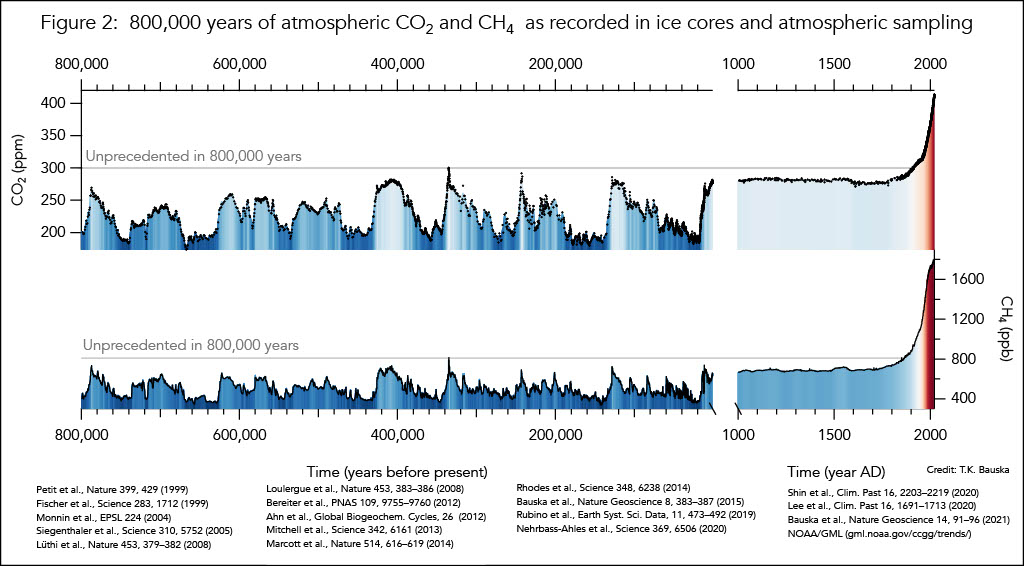
Natural climate change: glacial-interglacial cycles
By measuring the ratios of different water isotopes in polar ice cores, we can determine how temperature in Antarctica and Greenland has changed in the past. The oldest continuous ice core we have was drilled by the European Project for Ice Coring in Antarctica (EPICA) from Dome C on the Antarctic plateau (Fig. 3). It extends back 800,000 years and shows a succession of long, cold ‘glacial’ periods, interspersed roughly every 100,000 years by warm ‘interglacial’ periods (of which the last 11,000 years is the most recent). This succession of events is well-known from other records, and the coldest periods in Antarctica are the times when we had ice ages. Ice sheets extended over North America as far south as places like Chicago and New York, and over Britain to south of The Wash.
The role of greenhouse gases in glacial-interglacial cycles
From the air in our oldest Antarctic ice core, we can see that CO2 changed in a remarkably similar way to Antarctic climate, with low concentrations during cold times, and high concentrations during warm periods (see Fig. 3). This is entirely consistent with the idea that temperature and CO2 are intimately linked, and each acts to amplify changes in the other (what we call a positive feedback). It is believed that the warmings out of glacial periods are paced by changes in Earth’s orbit around the Sun, but these small changes in climate are amplified, mainly by the resulting increase in CO2, and by the retreat of sea ice and ice sheets (which leads to less sunlight being reflected away).
We can see how remarkably closely Antarctic temperature and CO2 tracked each other, but what about global temperature? Here we can examine the last time the earth emerged from an ice age. Scientists have compiled other geologic records of temperature from around the world to calculate the average global temperature. On this global-scale, CO2 starts increasing before temperature (see Fig. 4.) (Shakun/Osman), thus temperatures are said to “lag” behind CO2. This demonstrates that CO2 was not only a feedback on natural climate change but in fact major forcing that drove the earth out the last ice age.
In our modern era, of course, it is human emissions of CO2 that are expected to kick-start the sequence of events. We see no examples in the ice core record of a major increase in CO2 that was not accompanied by an increase in temperature. Methane concentration also tracks the glacial-interglacial changes, probably because there were less wetlands in the colder, drier glacial periods.
Abrupt climate change
The climate changes described above were huge, but relatively gradual. However, ice cores have provided us with evidence that abrupt changes are also possible. During the last glacial period, Greenland experienced a sequence of very fast warmings (see Fig. 5). The temperature increased by more than 10°C within a few decades. Other records show us that major changes in atmospheric circulation and climate were experienced all around the northern hemisphere. Antarctica and the Southern Ocean experienced a different pattern, consistent with the idea that these rapid jumps were caused by sudden changes in the transport of heat in the ocean. At this time, there was a huge ice sheet (the Laurentide) over northern North America. Most likely, freshwater delivered from the ice sheet to the North Atlantic periodically disrupted the overturning of the ocean, causing the transport of tropical heat to the north to reduce and then suddenly increase again. While this mechanism is unlikely to occur today’s world, it does show us that, at least regionally, the climate is capable of extraordinary changes within a human lifetime – rapid switches we certainly want to avoid experiencing.
Summary
Ice cores provide direct information about how greenhouse gas concentrations have changed in the past, and they also provide direct evidence that the climate can change abruptly under some circumstances. However, they provide no direct analogue for the future because the ice core era contains no periods with concentrations of CO2comparable to those of the next century.
Fact file
- Ice core. Cylinder of ice drilled out of an ice sheet or glacier. Most ice core records come from Antarctica and Greenland.
- Ice cores contain information about past temperature, and about many other aspects of the environment.
- Atmospheric carbon dioxide levels are now 50% higher than before the industrial revolution. This increase is due to fossil fuel usage and changes in land-use.
- The magnitude and rate of the recent increase are almost certainly unprecedented over the last 800,000 years.
- Methane also shows a huge and unprecedented increase in concentration over the last two centuries.
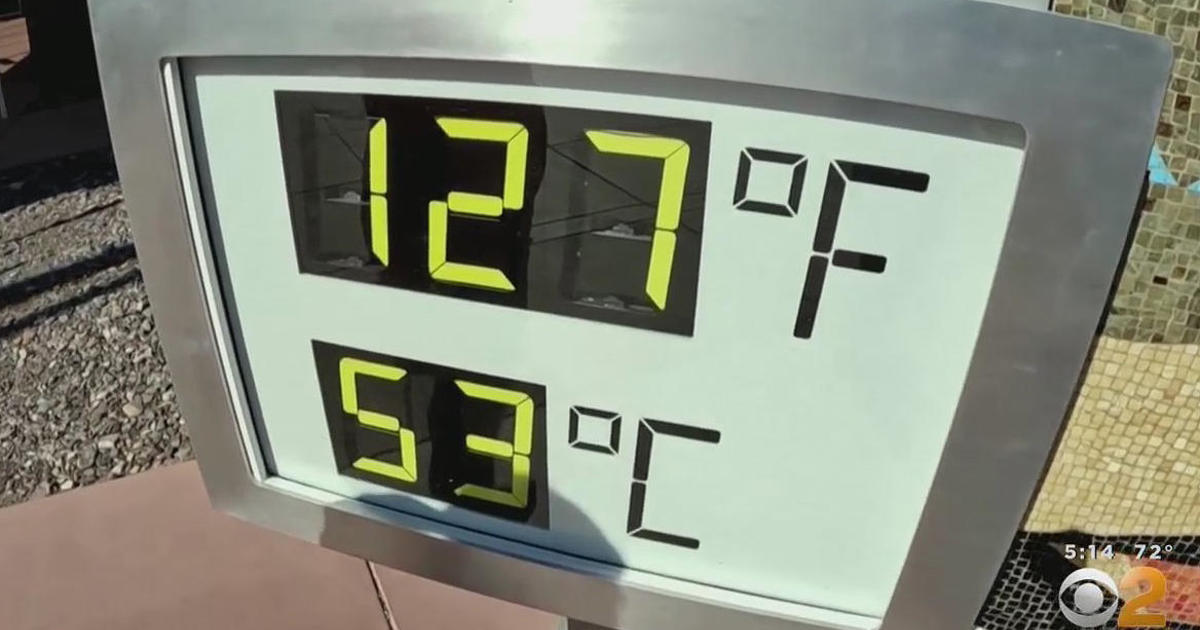
 www.cbsnews.com
www.cbsnews.com



